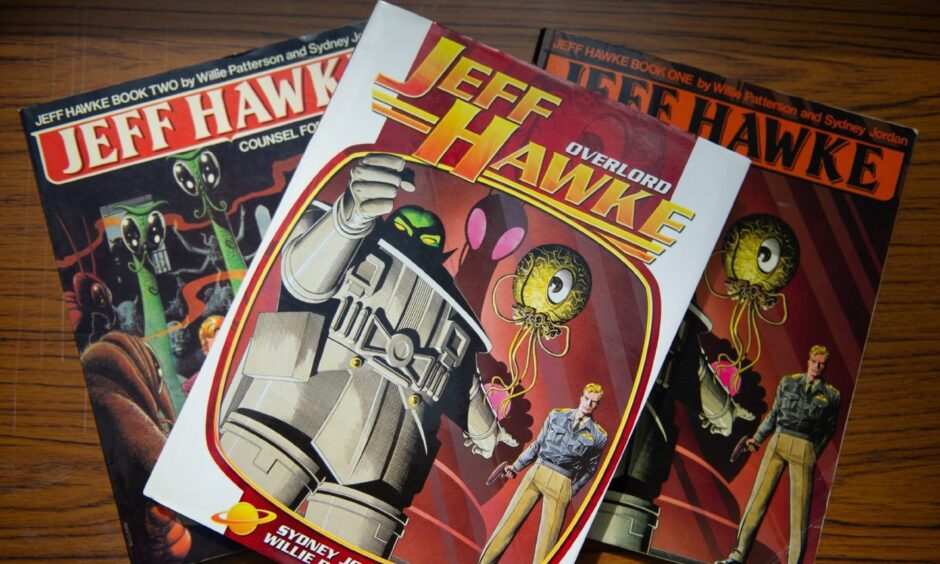
Jeff Hawke was the James Bond of the galaxies.
The cartoon spaceman was hatched in the nimble brain of Dundonian Sydney Jordan and is widely regarded as one of the most influential sci-fi comic strips of all-time.
Jeff Hawke was way ahead of his time after launching in 1954 and even predicted the day of the 1969 moon landings to within 15 days — 10 years before it happened.
From the start the distinctive visual style of the strip made it more appealing to adults.
It avoided the usual bug-eyed monsters of popular fiction and instead created more intelligent and satirical stories featuring sophisticated alien worlds and characters.
Life and times of Jeff Hawke creator Sydney Jordan of Dundee
Jordan was born in 1928 in Balfour Street and like most boys of the time he was an avid reader of the adventure comics which were published in Dundee by DC Thomson.
His fascination with storytelling was particularly inspired by a 1939 Hotspur story which told of a dying Earth and the great exodus of humankind to the safety of Venus.
The Last Rocket to Venus has stayed with him to this day.
Jordan’s family moved to Malvina Place in Perth shortly before the Second World War where he met his lifelong friend and future Jeff Hawke collaborator Willie Patterson.
The two studied aviation technology and design together for three years at Miles Aeronautical Technical School in Reading before Jordan returned to Dundee in 1948.
He joined the recently established Strathmore Studios, a freelance comics and illustration company run by former DC Thomson artists Bill McCail and Len Fullerton.
Speaking in a 1973 interview, Jordan recalled: “They really showed me a great deal about technique but it didn’t take me long to realise that the style of their comics was very staid, and very old fashioned, because of the demands of the market at the time.
“I began at this time to study the American comics, the colour sections, and I could see that that was the direction in which I wished to go.
“One of the chaps, Len Fullerton, who was a great naturalist artist but could also draw very fine comic stuff, he introduced me to (Alex) Raymond’s Flash Gordon because he had a great deal of them which he had saved over the years.”
Around 1950, Fullerton helped Jordan to devise a strip of his own called Orion, about a pilot sent to investigate a UFO sighting, which he originally drew using scraperboard.
Meanwhile, Jordan was beginning to get professional work, starting with a strip for the Sunday Mail in Glasgow called Dora, Tony and Liz, which began in 1951.
He escaped dour 1950s Scotland not just for London but for the Galaxy when he developed his earlier Orion idea which was commissioned by the Daily Express.
It was taken up but only after the Flash Gordon-like heroic character was renamed Jeff Hawke and given the position of a Royal Air Force Pilot.
Jeff Hawke launched in the Express in February 1954 at a time when the public were fascinated by space exploration.
Jordan recalled that the first story “was a bit like ‘Flash Gordon but it gradually developed into quite a scientific exercise, trying to relate the stories to current events”.
Two years later, Patterson joined his childhood friend as the writer.
A story would have taken about three months to publish in full and fans who wanted to read the full adventure had to buy the Daily Express each day.
Often in the plots there was a connection between extra-terrestrial entities, archaeological mysteries and even supernatural creatures.
The series was constantly enlivened by a galaxy of memorable creations including the arch-villain Chalcedon and the one eyed lemon-shaped creature Kolvorok.
A strip which appeared on November 15 1959 depicted a stone which commemorates the first human landing on the moon, noting that it happened on August 4 1969.
“When I am asked to explain how I was able to get within 15 days of the actual date of the landing, I tend to fall back on the fact that July 4, American Independence Day, would have been something to aim for in terms of maximum kudos in the battle for supremacy in the space race,” said Jordan in 2019.
“So allowing for last minute delays, a 15 day hold-up would seem acceptable in any guesswork from 10 years before.
“My two years at Miles Aircraft’s Technical School just after the war gave me a fair understanding of aviation engineering and I could see that NASA was building some very convincing hardware by 1959 so 10 years ahead seemed ample time to design and construct a lunar lander.”
The storylines were memorable
As Jeff Hawke’s popularity grew, the Sunday Express also wanted a strip.
In 1960, in order to manage the extra workload expected, Jordan asked another Dundee-born comics artist, Colin Andrew, to help him with the art on the daily strip.
Other memorable storylines included Hawke being pursued from his moon base to the National Portrait Gallery in London by the spirit of the Mona Lisa.
Anti-Gravity Man was a take on man’s first steps into space where the competition was beaten by an Englishman who landed on the moon in a Mini-Cooper.
A strange tale of an alien child’s death was revealed by the youngster’s powerful toys found scattered around the world and leading to a hidden tomb in Burma.
And the human race being rescued from the ambitions of an alien estate agent!
During the 1960s, Patterson was working on numerous other strips as well as Jeff Hawke, but the heavy workload had a serious effect on his mental health.
In 1969, following the fashion of the times, the Express demanded the strip be sexed up with the inclusion of more female characters which were preferably scantily clad.
Patterson disagreed and eventually quit.
Jordan took back responsibility for stories and drawings.
Following a change of management in 1974, the Daily Express suddenly decided to drop the strip without warning, despite a wave of protests from its many fans.
The newly established Scottish Daily News continued to publish it for another year but it folded in 1975.
After the conclusion of Jeff Hawke’s adventures, Jordan tried to revamp the character in a similar strip called Lance McLane in the Daily Record from 1976 to 1988.
This was a grim post-apocalyptic saga in which the remaining humans live on Mars, the remains of a damaged Moon and various spaceships and orbiting space stations.
Dundee exhibition celebrating Jeff Hawke legacy
Alongside its British fans, Jeff Hawke is particularly popular in Italy and Scandinavia.
The Patterson-Jordan period is considered the “true” Jeff Hawke by most fans.
Patterson’s health gradually declined and he died aged just 57 in 1986.
“Willie was a man who saw beyond the skies to the stars,” said Jordan in his eulogy following his friend’s death.
This extraordinary world of visual imagination is being celebrated in a new exhibition at the University of Dundee’s Tower Building Foyer Gallery until January 6.
The exhibition presents a selection of original art from Jeff Hawke and Lance McLane.
Now aged 95, Jordan took a sentimental trip back into space when he attended the opening of the exhibition which he described as “amazing” and “really special”.
It is.
“The history of man is the story of 800 ghosts, standing at my back,” he said.
“Only 800 ancestors ago, I was a hominoid, just emerging from the ape.
“And 650 ancestors ago, I was still living in a cave.
“Yet think – today man’s footprint is on the moon.
“On this timescale Jeff Hawke’s journeys to the stars are not fantasy.
“They are the events of tomorrow.”
Jeff Hawke is still standing tall in a universe of superheroes.
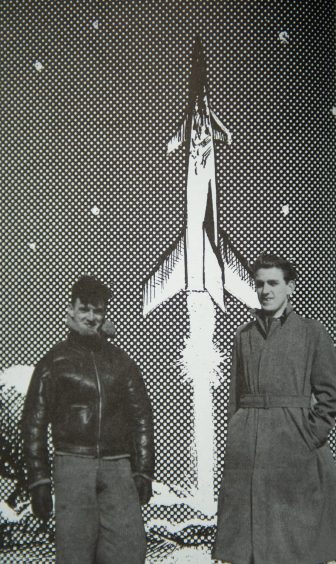
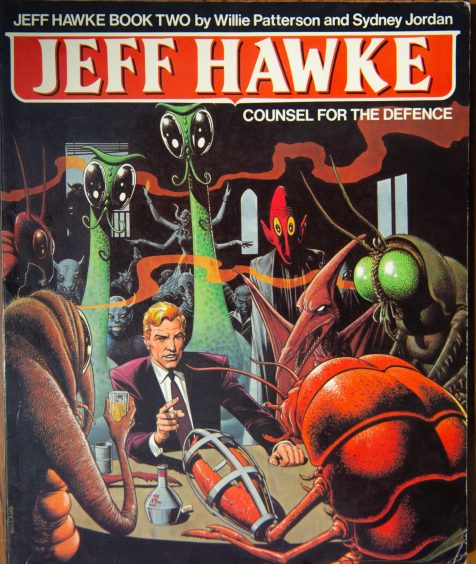
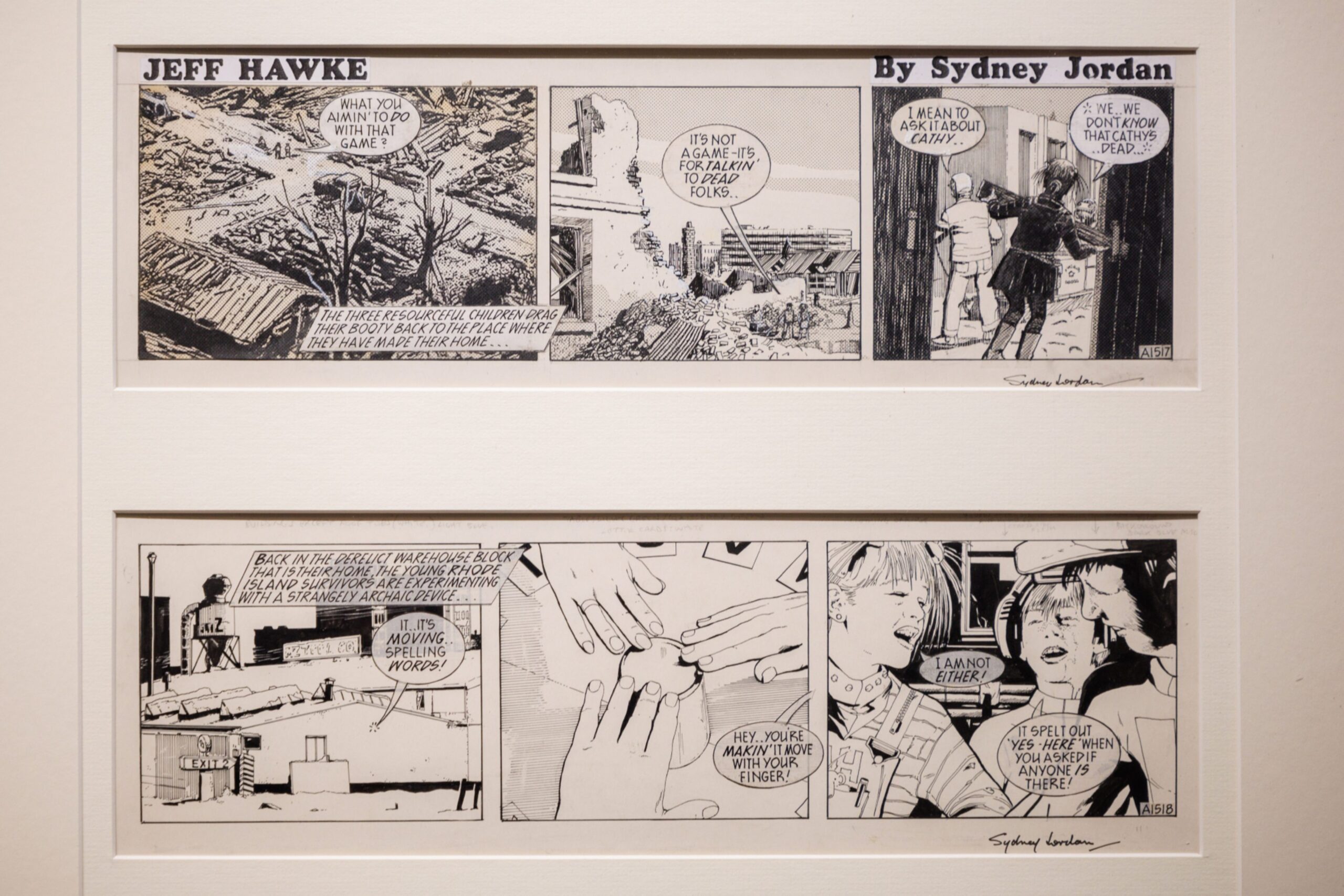
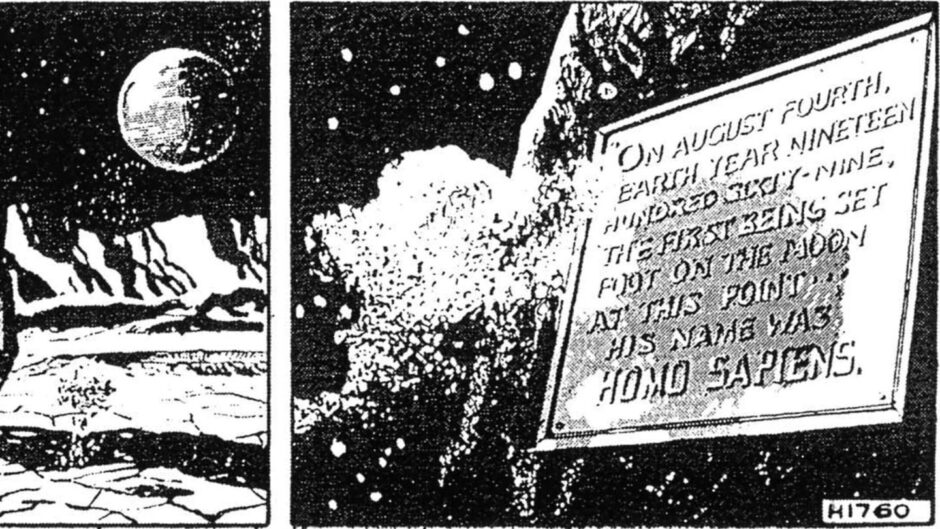
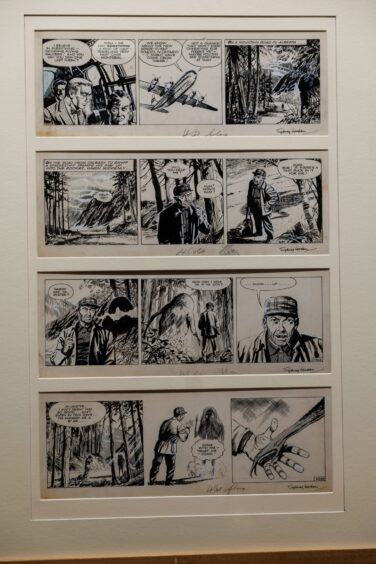
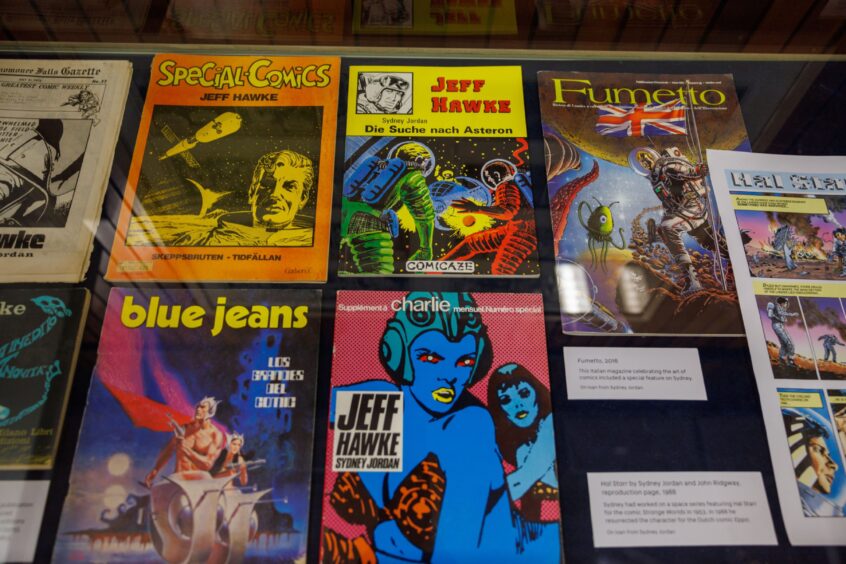
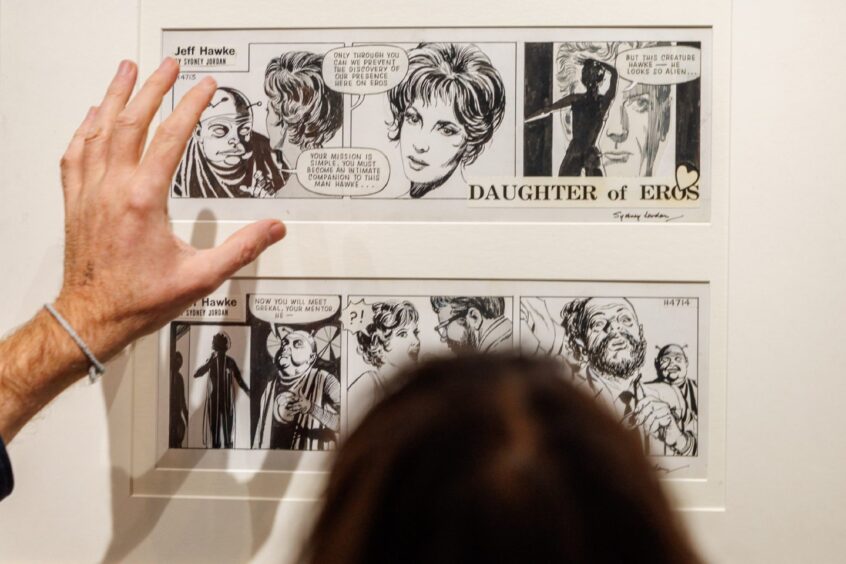
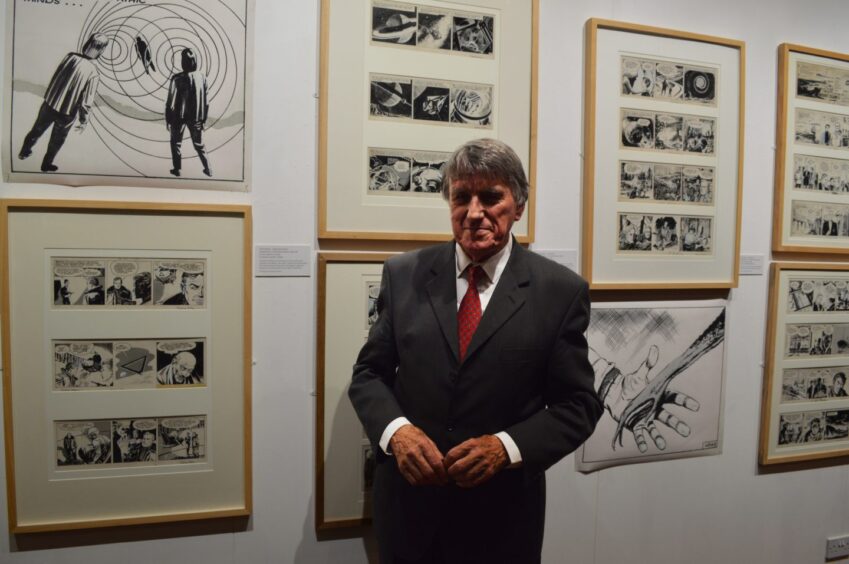
Conversation